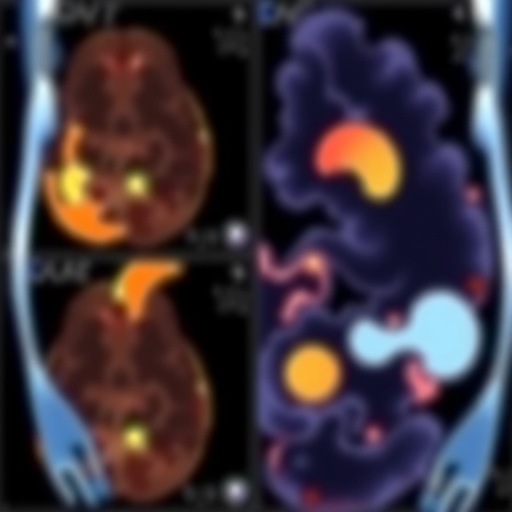The relentless march of aging carries with it a plethora of challenges, chief among them being sarcopenia, a condition characterized by the loss of muscle mass and function. As our population ages, the prevalence of sarcopenia is becoming increasingly alarming. Current estimates suggest that nearly 50% of older adults suffer from this debilitating condition, which significantly affects their quality of life and independence. Within the realm of geriatrics, the quest to find effective diagnostic and treatment modalities for sarcopenia has led to various innovative approaches. Chief among these is muscle ultrasound, a non-invasive imaging technique that promises to unveil the intricacies of muscle health in ways that traditional methods cannot.
Muscle ultrasound, while not universally adopted, offers precise real-time imaging capabilities. This advanced technique utilizes high-frequency sound waves to create images of muscle structure and composition. It can measure muscle thickness, detect abnormalities, and assess muscle quality—all key factors in diagnosing sarcopenia. The fundamental advantage of ultrasound over other imaging modalities, such as MRI or CT scans, lies in its portability, cost-effectiveness, and ease of use. These attributes position muscle ultrasound as a potentially revolutionary tool in the ongoing fight against sarcopenia.
However, despite its promise, the journey of muscle ultrasound towards broader clinical application is not devoid of hurdles. One of the primary challenges is the lack of standardized protocols and the variability in ultrasound equipment quality across different settings. This inconsistency complicates the interpretation of results, leading to ambiguous diagnoses that could hinder timely intervention. Furthermore, the expertise required to operate ultrasound machines and interpret their findings can be a barrier in many geriatric care settings. The rapid advancement of technology in this field demands that practitioners stay informed and adequately trained to harness the full potential of muscle ultrasound.
Research exploring the efficacy of muscle ultrasound in assessing sarcopenia is gathering pace, with numerous studies investigating its feasibility and reliability. A significant aspect of this research focuses on establishing normative data for muscle characteristics, which is crucial for accurate diagnosis. These baseline measurements will help clinicians distinguish between normal age-related changes in muscle and pathological loss associated with sarcopenia. As studies accumulate, the hope is that robust guidelines will emerge to streamline the clinical utilization of muscle ultrasound, transforming it into a standard assessment tool for older adults.
Furthermore, the role of muscle ultrasound extends beyond mere diagnostics; it may also play a pivotal role in the management and monitoring of sarcopenia. By providing objective measurements, clinicians can tailor interventions more precisely. For instance, tracking changes in muscle mass and function over time can inform rehabilitation strategies, guide nutritional interventions, and assess the effectiveness of therapeutic exercises. Consequently, muscle ultrasound could serve not only as a diagnostic instrument but also as a valuable tool in personalized geriatrics, where treatments are individualized based on precise measurements and outcomes.
In parallel with advancements in muscle ultrasound, the broader context of sarcopenia management is evolving. Ongoing research underscores the importance of a multidisciplinary approach to managing this condition. Comprehensive strategies that incorporate strength training, nutritional support, and lifestyle changes are paramount. Evidence increasingly indicates that interventions combining these elements yield the best outcomes for older adults at risk of or already experiencing sarcopenia. However, the challenge remains in effectively communicating these combined strategies to both patients and healthcare providers, ensuring that interventions are adopted and sustained.
In the landscape of healthcare, building awareness around sarcopenia and its consequences is critical. Public health campaigns aimed at educating older adults and their caregivers about the signs of sarcopenia could encourage proactive measures. Educating stakeholders on the benefits of early detection and intervention can foster a culture of awareness that prioritizes muscle health. Simplifying the process of testing and diagnosis through accessible technologies like muscle ultrasound can empower older adults in taking charge of their muscle health.
Moreover, there is a growing recognition that sarcopenia and its management must be approached from a global perspective. As societies across the globe grapple with aging populations, the burden of sarcopenia will strain healthcare systems. Collaborative efforts are essential in addressing this issue, pooling resources, and sharing best practices. International guidelines and standards concerning sarcopenia diagnosis and treatment will require collaboration among researchers, healthcare professionals, and governing bodies dedicated to geriatric care.
In conclusion, muscle ultrasound stands at the crossroads of innovation and necessity in the battle against sarcopenia. While it faces challenges in standardization, training, and wider acceptance, the potential it holds as a diagnostic and monitoring tool is profound. As research continues to evolve, the vision of integrating muscle ultrasound into routine geriatric assessments could soon become a reality. In our quest to preserve the dignity and quality of life for our aging population, harnessing innovative technologies and fostering a proactive approach toward muscle health remains imperative.
The future of muscle ultrasound in combating the sarcopenia conundrum remains uncertain but filled with promise. As we deepen our understanding of the interplay between aging and muscle health, it becomes increasingly clear that the tools we employ will shape the landscape of geriatric medicine. Embracing advancements in muscle ultrasound technology not only facilitates timely diagnosis but could also forge pathways toward more effective treatments and management strategies, ultimately transforming the way we approach sarcopenia in aging populations.
This multifaceted approach—where diagnostic innovations, lifestyle adaptations, and comprehensive care converge—could redefine our response to sarcopenia. As we stand on the brink of unprecedented possibilities in geriatric healthcare, the implications of adopting muscle ultrasound could reverberate across disciplines, encouraging a paradigm shift toward a more proactive, informed, and empowered elderly population.
In a world where the population continues to age at an accelerating pace, the implications of sarcopenia cannot be underestimated. Stakeholders across the healthcare spectrum must unite in their efforts to heighten awareness, endorse innovation, and implement effective care strategies to combat the deleterious effects of muscle loss. As we reflect on the strides made thus far and anticipate the next steps on this journey, it is essential to keep in mind that the efficacy of muscle ultrasound and a comprehensive approach to managing sarcopenia could very well shape the future of geriatric wellbeing.
Ultimately, the pursuit of knowledge and improvement in muscle health transcends individual efforts. It is a collective endeavor that invites clinicians, researchers, patients, and advocates alike to share in the responsibility of addressing the looming challenge of sarcopenia. Through continued research, dialogue, and collaboration, we can work toward an era of enlightened geriatric care, ensuring that our aging population enjoys the vitality and independence they deserve.
Subject of Research: Sarcopenia Diagnosis and Management through Muscle Ultrasound
Article Title: The sarcopenia conundrum: why muscle ultrasound does (or does not) have a future.
Article References:
Perkisas, S., Welch, C. & Soulis, G. The sarcopenia conundrum: why muscle ultrasound does (or does not) have a future. Eur Geriatr Med (2025). https://doi.org/10.1007/s41999-025-01335-4
Image Credits: AI Generated
DOI:
Keywords: Sarcopenia, Muscle Ultrasound, Aging, Geriatrics, Diagnosis, Health Care, Musculoskeletal Health, Rehabilitation, Public Health, Nutritional Support.
Tags: aging and muscle losschallenges in sarcopenia diagnosisfuture of muscle imagingimproving quality of life in elderlyinnovative approaches to sarcopenia treatmentmuscle health assessmentmuscle quality assessment methodsmuscle ultrasound advantagesnon-invasive imaging techniquessarcopenia diagnosissarcopenia prevalence in older adultsultrasound technology in geriatrics




